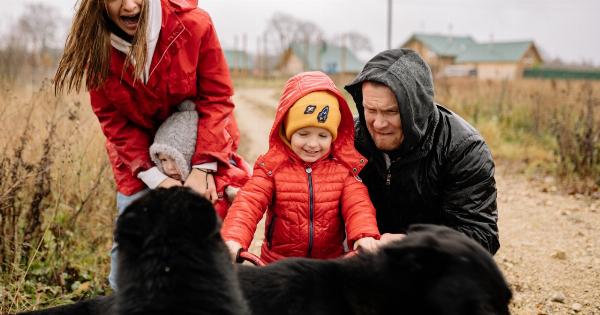Dogs have long been considered man’s best friend, known for their loyalty, companionship, and ability to understand human emotions.
But have you ever wondered if dogs themselves experience emotions? While they may not express their feelings in the same way humans do, there is ample evidence to suggest that dogs indeed have a rich emotional life. In this article, we will explore the fascinating world of canine emotions and try to understand what goes on inside a dog’s mind.
1. The Evolution of Dogs and Emotions
Dogs are believed to have descended from wolves, and just like their wild ancestors, they share many behavioral and emotional traits.
Wolves are highly social animals that form strong bonds with their pack members, and dogs have retained this capacity for social bonding. As pack animals, dogs are naturally inclined to form strong emotional connections with their human families and other pets.
2. Empathy and Compassion
One of the most remarkable aspects of canine emotions is their ability to empathize with humans and other animals. Numerous studies have shown that dogs can pick up on human emotions, demonstrating empathy and understanding.
For example, if a person is feeling sad, dogs have been observed to offer comfort by nuzzling, licking, or simply sitting close to the person.
There have also been heartwarming stories of dogs displaying compassion towards other animals.
From helping injured animals to adopting orphaned animals as their own, these acts of compassion showcase the depth of emotions that dogs are capable of experiencing.
3. A Sense of Joy
We have all witnessed the sheer delight dogs express when engaging in activities they enjoy, such as playing fetch or going for a walk. This undeniable display of joy is a clear indication that dogs experience positive emotions.
Their wagging tails, happy barks, and playful behavior demonstrate their ability to feel happiness and pleasure.
4. Fear and Anxiety
On the other end of the emotional spectrum, dogs are also capable of feeling fear and anxiety. Dogs may exhibit signs of distress in situations that they find threatening or uncomfortable.
These signs can include trembling, barking, whimpering, or attempting to hide. Understanding and addressing a dog’s fears and anxieties is crucial for their overall well-being.
5. Grief and Loss
Dogs form strong bonds not only with their human companions but also with other dogs or animals in their lives. When a beloved companion passes away, dogs may exhibit behaviors that suggest they are experiencing grief and loss.
They may become withdrawn, refuse to eat, or search for their lost friend. These behaviors are reminiscent of the mourning process observed in humans.
6. Jealousy and Possessiveness
Just like humans, dogs can also experience jealousy and possessiveness.
If a dog feels that their resources or attention are being taken away by another pet or individual, they may exhibit behaviors such as growling, snapping, or guarding their possessions. It is essential to address these emotions with training and proper socialization to ensure a harmonious household.
7. Unconditional Love
One of the most beautiful aspects of a dog’s emotional life is their unconditional love for their human companions. Dogs are known for their unwavering loyalty and devotion, providing comfort and companionship throughout their owner’s life.
This selfless love is a testament to the deep emotional connections that dogs can form.
8. Communication of Emotions
While dogs may not have the same verbal language as humans, they have an incredible ability to communicate their emotions through body language, vocalizations, and facial expressions.
By paying attention to their tail position, ear position, eye contact, and overall body posture, we can gain insight into their emotional state. Understanding these nonverbal cues enables us to better empathize with our furry companions.
9. The Role of Oxytocin
Oxytocin, often referred to as the “love hormone,” is a neurotransmitter that plays a crucial role in bonding and social behaviors.
Research has shown that levels of oxytocin increase in both humans and dogs during positive social interactions. This suggests that dogs experience a similar emotional bond and attachment with their owners as we do with them.
10. Conclusion
While we may never fully understand the complexities of a dog’s emotional life, there is no denying that they possess a wide range of emotions. Dogs experience joy, fear, love, grief, and many other emotions that make them unique individuals.
Recognizing and respecting their emotional needs is vital for building a strong bond and ensuring their overall well-being. So the next time you look into your dog’s eyes, remember that there is a whole world of emotions behind that wagging tail.






























